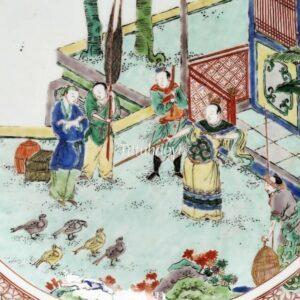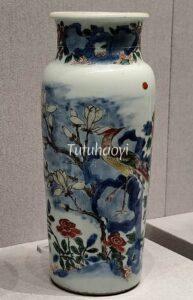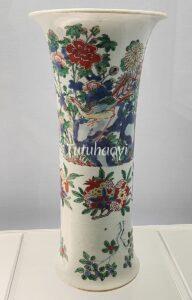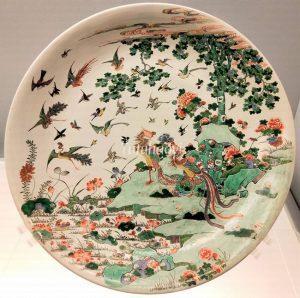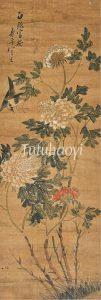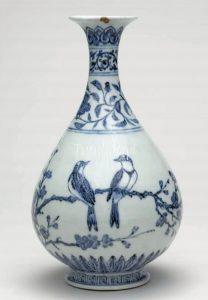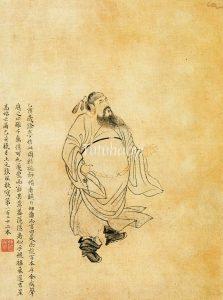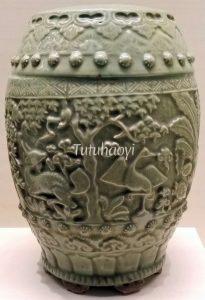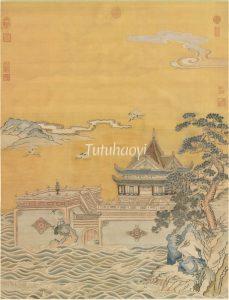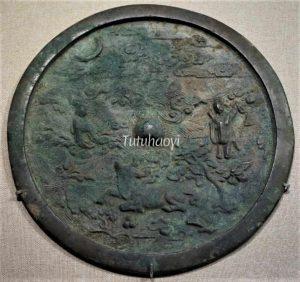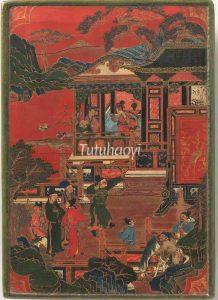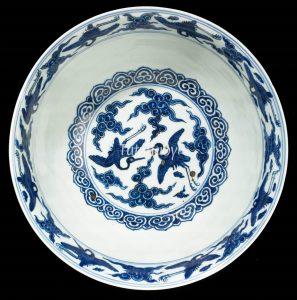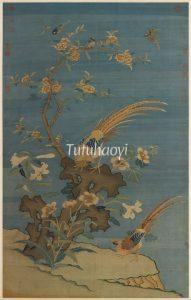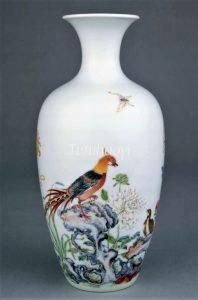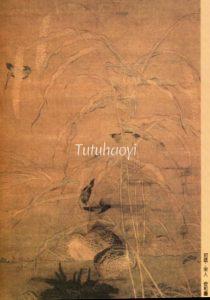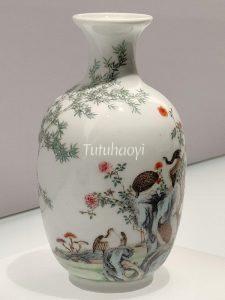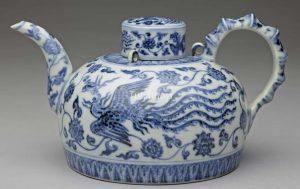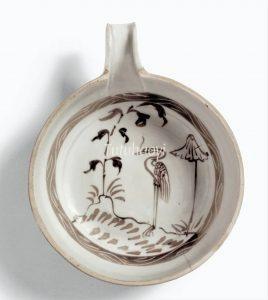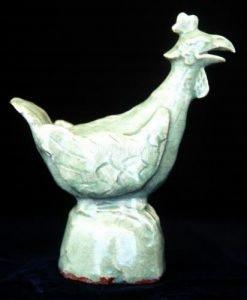Showing Results Containing
The Chinese Valentine’s Day, Qixi Festival (七夕节), is just around the corner. It falls on the seventh day of the seventh month of the traditional Chinese year. Dr Yibin Ni has conducted comprehensive research on this topic and has written an articl...
Appreciation of a top-tier porcelain garlic-head bottle vase painted with a pair of red-whiskered bulbuls in polychrome enamels over transparent glaze in the falangcai style and gilding displayed in the Petite Galerie of the Louvre in Paris.
Correctly identifying figures is crucial to deciphering an obscure story scene. Looking at this featured image, for example, some may think that the two figures in non-specific attires on a dragon and a phoenix are anonymous Daoist immortals. But ...
On the seventh day of the seventh month of the lunar Chinese year, young men and women will celebrate their traditional ‘Valentine’s Day’, Qixi Festival (七夕节). The custom can be traced back to an ancient story.
More often than not, traditional Chinese motifs or symbols are not receiving their deserved attention, being given simplistic or inadequate labels and inaccurate explanations in our museums, catalogues, or even scholarly writing. The treatment of ...
People who are not familiar with Chinese history and parables may have the impression that the above image is a genre painting of fisherman’s daily life. But in fact, there is more meaning to it. Dr Yibin Ni will explain the story in detail and ho...
When you mistake a motif in a traditional Chinese picture, you could have misinterpreted the meaning of the whole image intended by the ancient craftsman. Dr Yibin Ni has used the following example to illustrate the hidden meaning of a series of i...
Jia Chang (贾昌 712–810) from the Tang Dynasty was renowned for his exceptional skills in training roosters for cockfighting. His legendary story is recorded in the Extensive Records of the Ta...
‘Fu Gui Bai Tou 富贵白头’ is interchangeable with ‘Bai Tou Fu Gui 白头富贵’, with the same meaning of ‘May you enjoy wealth and high position ...
Phoenix has been deemed as a holy, noble and beautiful bird in the Chinese folk myths and was regarded as the king of all birds.
In Volume 915 of the comprehensi...
Pun Design:
Chinese bulbul + Peony
Punning Details:
– ‘bai tou 白头 white-headed’, of ‘bai tou weng 白头...
Pun Design:
Chinese bulbul + Two
Punning Details:
A pair of Chinese bulbuls in image imply the couple or the marriage;
‘bai tou 白头 white-headed’, of ‘bai tou weng 白头翁 Chinese bulbul’ (the white-headed-old-chap bird) can imply a ripe old age.<...
Wang Xizhi (王羲之, 303–361) is often said to be the greatest calligrapher in Chinese history. He has his biography in the official history of Jin 晋 dynasty (c. 265–420). One anecdote in it concerns his fame for his calligraphic skill and his love of geese. A Daoist priest in the neighbourhood raised a handsome flock of gee...
The flying mammal bat is called bian fu (蝙蝠) in Chinese. Image of the bat including its various stylised forms are often used in Chinese art to express an auspicious meaning, as ‘蝠 fu
Yang Shen (杨慎, 1488–1559), alias Sheng’an (升庵), is a literatus and poet in the Ming dynasty (1368–1644). He recorded in Volume Ninety-Four of Sheng’an Additional Works a folklore anecdote: ‘In the northern dialect, there is no difference in sound between the he 合 for “coming together” and the he 鹤 for “...
Duke Mu of the Qin State (秦穆公, died 621 BCE) was one of the so-called Five Hegemons (五霸 wuba) in the Spring and Autumn Period (770 – 476 BCE) (春秋 chunqiu). He had a daughter named ‘Nongyu (弄玉, meaning Playing Jade)’, who was a talented musician excelling at playing the sheng (笙 mouthorgan...
In this scene, there are several Chinese longevity symbols such as the
The story scene refers to an old Chinese saying: in the fight between the sandpiper and the clam, the fisherman has the best of it. This parable came from an ancient Chinese text entitled ‘Strategies of the Warring States (战国策 Zhanguo Ce)’. The book contains anecdotes of diplomacy and warfare during the Warring ...
The seventh day of the seventh month of the traditional Chinese year is the Chinese ‘Valentine’s Day’, Qixi Festival (七夕节). The custom can be traced back to an ancient story about a weaver girl and a cowherd:
Once upon a time, one of the daughters of the Lord of the Heaven lived on the east side of the Mi...
Li Yuan (李渊 566–635 CE) excelled at horse-riding, archery, and calligraphy as a young man. He was to be the future founder (reigned 618–626 CE) of the Tang dynasty (618–907 CE). Miss Dou was exceptionally smart and her father Dou Yi 窦毅, the governor of Dingzhou, was very particular about the quality of his future son-in-...
According to the oldest dictionary in China, Shuowen jiezi 说文解字 (Explanations of Simple Graphs and Analyses of Composite Graphs), the earliest version of the character for ‘crane’ is a composite graph consisting of a pictograph for a bird, the present-day character niao 鸟, at the right, with feet and a ...
This pun rebus picture consists of four essential pictorial elements: bird,
The zhi pheasant 雉, also called Huachong 华虫 in ancient China, is one of the most popular birds depicted in traditional Chinese art. Due to its characteristic multicoloured long-tail, the pheasant is associated with the wide-ranging literary talents of the emperor. It is also used in pun rebus pictures, as ‘z...
Pun Design: Persimmons + Apples + Quails
Punning Details:
The Chinese character ‘shi 柿’ in ‘shi zi 柿子’ for ‘persimmon’...
Pun Design: Quails + seedheads of foxtail millet
Punning Details:
The word ‘sui 穗’ for ‘millet seedhead’ is a pu...
Pun Design: Persimmons + Quails
Punning Details:
The word ‘shi 柿’ in ‘shi zi 柿子’ for ‘persimmon’ can pun on ‘shi 事’ for ‘things’. The re...
Pun Design: Apples + Continue Reading
Pun Design: Quail + Long-tailed Continue Reading
Pun Design: Quails + Magpies
Punning Details:
The word ‘an 鹌’ in ‘an chun 鹌鹑’ for ‘quail’ puns on ‘an 安’ for ‘peace’ or ‘secur...
Pun Design: Quails + Cereal Plant
Punning Details:
The word ‘an 鹌’ in ‘an chun 鹌鹑’ for ‘quail’ makes a pun on ‘a...
The Chinese character ‘an 鹌’ in ‘anchun 鹌鹑’ for ‘quail’ makes a pun on ‘an 安’ for ‘peace’. The character ‘zhu 竹’ for ‘bamboo’ is a pun on ‘zhu 祝’ for the verb ‘to wish’ and thus is used here to cue the character cluster ‘zhubao 竹报 (祝报)’ for the verb phrase ‘to wish to...
Pun Design: Two + Quails
Punning Details: The word ‘an 鹌’ in ‘an chun 鹌鹑’ for ‘quail’ makes a pun on ‘
The feng phoenix, or feng huang 凤凰, which is often portrayed to resemble a peacock or golden pheasant, is the second of China’s Four Sacred Creatures...
Quail is a middle-sized bird, and is nowadays farm-raised for table food and their eggs. However, they play an interesting role in traditional Chinese art with an auspicious meaning.
Quail’s Chinese name is ‘an chun’(鹌鹑). Its first character 鹌 (‘an’) is often used in Chinese language for its pun ...
‘San gong 三公’ are the ‘Three Top Lords in the Imperial Court’. The ‘gong 公’ from the Chinese name ‘gong ji 公鸡’ for ‘rooster’ puns on the Chinese name for ‘lord’ and three roosters in the picture represent the three top lords, which are the three top positions in the imperial court. The Chinese ...
Pun Design:
Persimmon + Chicken/ rooster/ cockerel
Punning Details:
– ‘shi 柿’ in ‘shi zi 柿子 persimmon’ is a pun on ‘shi 市 business’
– ‘大鸡 da ji’ for ‘large Continue Reading
‘Shuang 双’ is the Chinese word for ‘two’. ‘Xiong 雄’ in ‘Xiong ji 雄鸡’ in the Chinese name for ‘rooster’ makes a pun on ‘xiong 雄’ for ‘hero’. Thus, the image of...
An egret and lotus flowers (莲花) are pictured in combination to infer ‘yi lu qing lian 一路清廉’, which means ‘You are an honest and uncorrupted official in ...
A large Longquan pottery rooster sculpted on a rock sends good fortune to the receiver’s or owner’s family because da ji 大 鸡 for ‘large rooster’ sounds the sam...
One of the most commonly used motifs that depicts household fowls. It has also been frequently used in pun rebuses with intended meaning of ‘good fortune’ or ‘good wishes’, as its Chinese pronunciation is ‘ji 鸡’, punning on ‘ji 吉’ which means good fortune. See more related pun rebus pictures:







